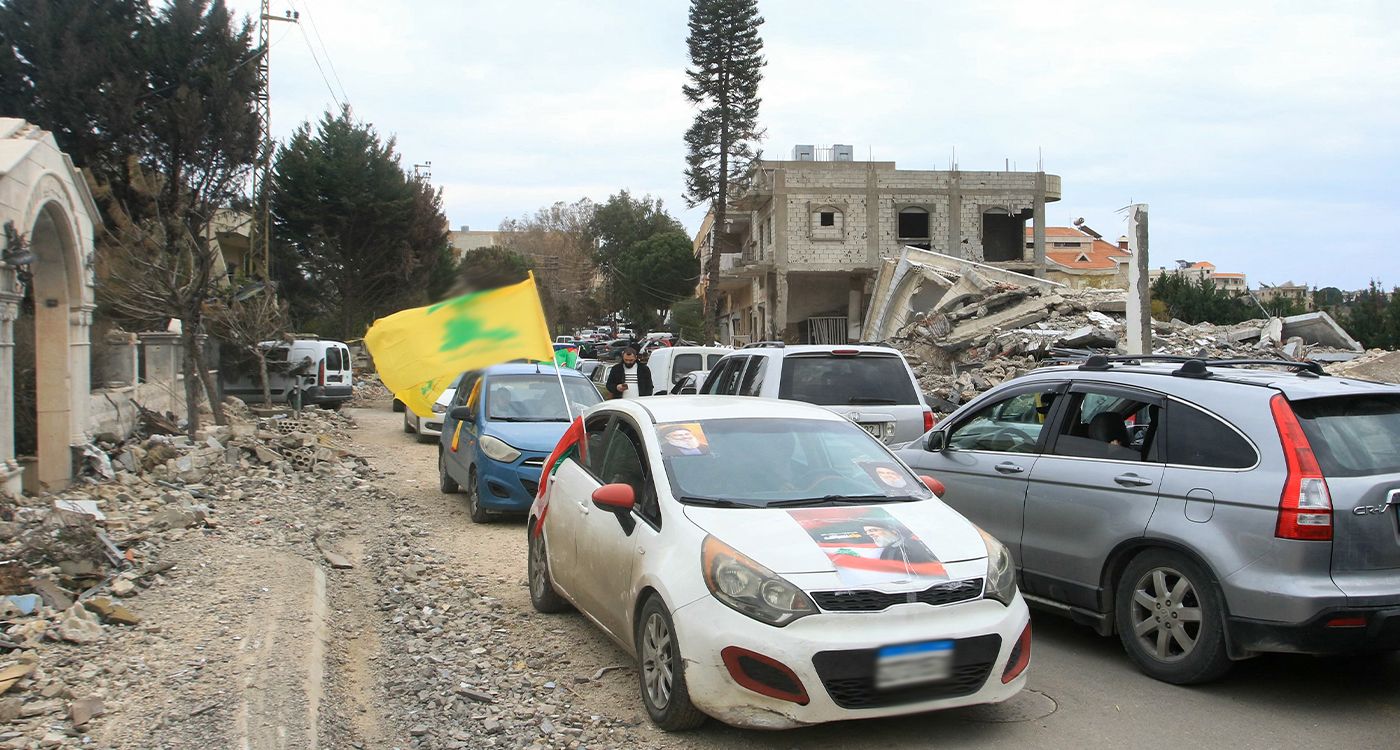
Civilians who headed to the border villages of southern Lebanon on Sunday, seemingly spurred on by Hezbollah, demonstrated remarkable audacity. The standard-bearers of the “resistance” will likely frame this as yet another “victory,” merely because residents sought to return to certain localities despite repeated warnings from the Israeli army.
Setting foot once again in Kfar Kila, Hula or Markaba, to name a few, will undoubtedly be touted as an achievement. Maybe so… But this conveniently overlooks the fact that Hezbollah’s launch of hostilities on October 8, 2023 – at Tehran’s instigation “to preserve the Iranian regime,” as President Emmanuel Macron explicitly stated – was driven by the slogan “On the road to Jerusalem.” Since then, the ambition, the proudly proclaimed “victory,” has been reduced to reaching Khiam and Odaisseh or, worse still, returning to the southern suburbs.
To provide an objective assessment of the dire developments endured by the Lebanese population in recent months, let us indulge in a dream and step into a time machine… It is October 6, 2023. The residents of South Lebanon have been living in complete peace for more than 17 years (precisely since August 2006), going about their usual activities. Politically, Hezbollah holds a dominant position on the local chessboard. But then, on October 8, the “Party of God” ignites its own little war against the State of Israel. The publicly stated reason: to support Hamas, embroiled in a conflict in Gaza. In reality, it was to serve the Iranian regime’s state interests, as President Macron clarified.
The toll of this military venture initiated by the Iranian Revolutionary Guard’s foothold in Lebanon is staggering: the assassination of Hezbollah’s iconic and charismatic leader, Hassan Nasrallah, and his presumed successor, Hashem Safieddine; the elimination of most senior officials and a significant portion of the militia of the Iran-backed group; the group’s military infrastructure largely wiped out; the complete destruction of dozens of villages in the southern region; and hundreds of thousands of residents forced into exile (short of heading to Jerusalem…). Hezbollah’s leadership, too busy building dozens of long tunnels for purely military purposes, failed to set up a single shelter to protect the population. Instead, it transformed villages – and the entire country, for that matter – into vast stockpiles of missiles, weapons and munitions, unbeknownst to the public. This large arsenal, whose impact in the confrontation ultimately remained limited, nonetheless resulted in the mass destruction of hundreds of homes by Israeli airstrikes across the country.
This will likely be called collateral damage in Tehran, the important thing being that the mullahs’ regime is gaining additional bargaining chips in its standoff with the United States and Israel, not to mention Saudi Arabia. In this context, the situation in Gaza is equally telling. To understand this better, let us also travel back in time… It is October 6, 2023, in Gaza. The population lives under the shadow of a relative calm, still spared from bombings and military operations.
Hamas reigned as the absolute authority over this small Palestinian territory until the fateful operation of October 7, 2023, which yielded a result as staggering as what transpired in Lebanon: the return of the Israeli army across the entire Gaza Strip, particularly in the critical sectors along the border with Egypt; the dismantling of the leadership and senior cadres, along with the neutralization of thousands of Hamas militants, not to mention the tremendous loss of life among the civilian population; the destruction of 80% of Gaza’s homes and infrastructure; civilians forced to roam the streets, from one area to another, without shelters; the loss of political influence for the Palestinian faction… But none of this matters: Tehran’s mullah regime has firmly reasserted itself on the regional chessboard.
Beyond the specific cases of Hezbollah and Hamas, the entire history of the Middle East conflict is, in fact, punctuated by missed opportunities, clearly fruitless military ventures, and politically shameful irrational actions. Another journey through time would highlight the unspeakable disaster, the vast waste that has been the 75 years of the Israeli-Arab conflict – an era marked by destruction, death and, above all, repression of the region’s populations.




Comments